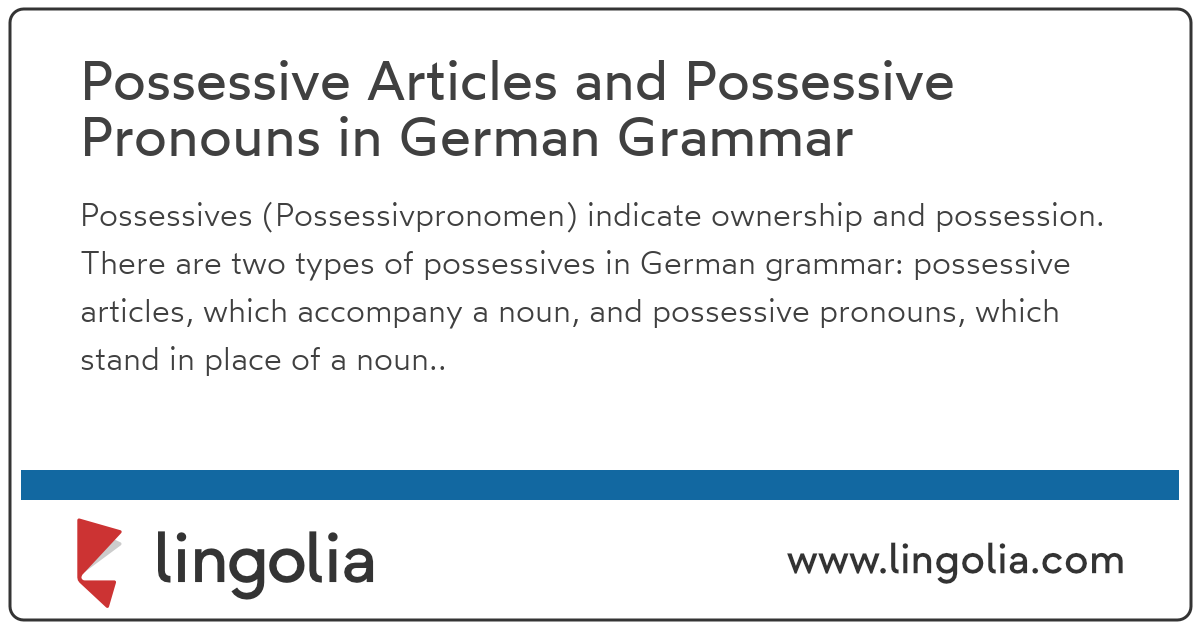
Another use is after prepositions requiring the genitive case, e.g. Vergissmeinnicht (instead of: "vergiss meiner nicht" or-vergessen takes the accusative as well-"vergiss mich nicht" in more modern form). Archaically, the pronoun form without -er can be used, e.g. Genitive personal pronouns may be used for the genitive object ("gedenke meiner": commemorate me). There is a well-known German saying "Der Dativ ist dem Genitiv sein Tod" (The dative case is the death of the genitive case), referring to the frequent colloquial replacement of traditionally genitive formulations with dative formulations (e.g. The genitive personal pronouns in the table above find very seldom use in modern German and are nearly always made obsolete by modern formulations. For example, my book translates to "mein Buch", or "das Buch von mir" (the latter an alternate formulation translated literally as the book from/of me), and never "das Buch meiner". Genitive personal pronouns (not to be confused with other instances of the genitive case such as "des"-see below) are sometimes explained as indicating possession however, this is incorrect and redundant, as the definition of a possessive pronoun (mein) is already to indicate possession. In the above examples, both birthday and dog are masculine, so "it" becomes "er" in the nominative case and "ihn" in accusative. The first of these is an example of gender-based pronoun usage that may not be intuitive to an English speaker because in English an inanimate object is almost always referenced by the pronoun "it." In German, nouns always have a relevant gender to consider.

Overliterally: He is tomorrow.) "Ich rufe den Hund" – "Ich rufe ihn." ( I am calling the dog – I am calling it.

"Wann ist dein Geburtstag?" – "Er ist morgen." ( When is your birthday? – It is tomorrow. "Sie spricht Deutsch." is third person female, this is shown by the change of "en" to "t" in the action (i.e., "sprechen" vs. For example, "Sie sprechen Deutsch." This means either "You speak German" or "They speak German", and it is completely up to the context to determine which one it is. The verbs following the formal form of "you"-"Sie"-are conjugated identically as in the third-person plurals. They normally emphasize the pronoun, but if they are applied to a reflexive pronoun (in the objective case), they emphasize its reflexive meaning. The two noun and pronoun emphasizers selber and selbst have slightly different meanings than if used with nominal phrases. ( Let us commemorate the victims.) OLD AND MODERN: Ich klage Herrn Max Mustermann des Mordes an. OLD AND MODERN: Lasst uns der Opfer gedenken. This is true for entsinnen (which is archaic in itself), but also for sentences such as: However, some verbs cannot be constructed otherwise, and thus genitive objects remain common language to some degree. In Modern German, erinnern rather takes the prepositional phrase with the preposition an. OLD: Ich erinnere mich ihrer (MODERN: Ich erinnere mich an sie.) ( I remember her.) OLD: Ich erinnere mich seiner (MODERN: Ich erinnere mich an ihn.) OLD: Ich entsinne mich ihrer (MODERN: Ich erinnere mich an sie.) But the genitive object, other than accusative or dative objects, is somewhat outdated:

First and second person pronouns usually do not, and they can be used anywhere in the sentence-except in certain poetical or informal contexts.ĭas im Schrank ( the thing in the cupboard) Das auf dem Tisch ( the thing on the table) In German, a pronoun may have a certain position in the sentence under special circumstances. The German pronouns must always have the same gender, same number, and same case as their antecedents.

As with pronouns in other languages, they are frequently employed as the subject or object of a clause, acting as substitutes for nouns or noun phrases, but are also used in relative clauses to relate the main clause to a subordinate one. German pronouns are German words that function as pronouns. Wikipedia's multilingual support templates may also be used - notably de for German.
#German grammar possessive pronouns iso#
This article or section should specify the language of its non-English content, using for phonetic transcriptions, with an appropriate ISO 639 code.


 0 kommentar(er)
0 kommentar(er)
